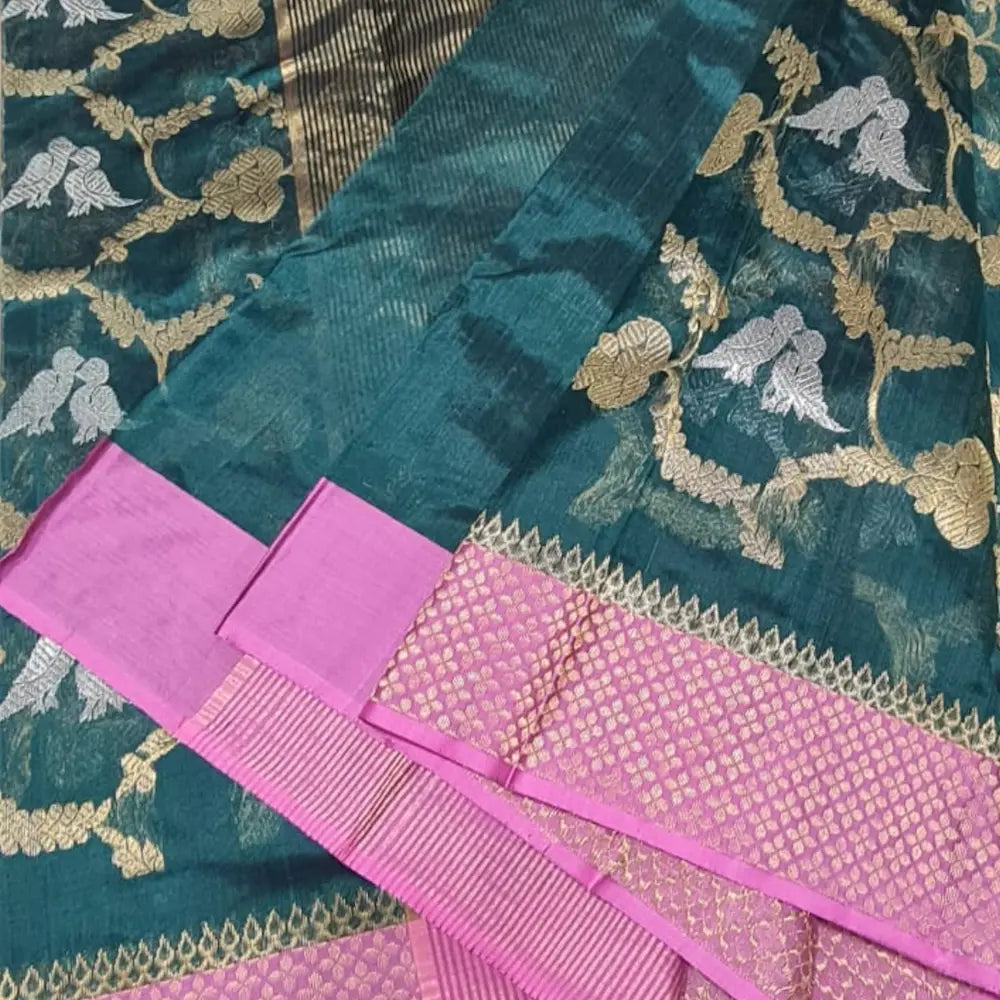
Chanderi Sarees: The Sheer Elegance of Madhya Pradesh

A Heritage Woven in Transparency and Grace
Chanderi sarees, originate from the town of Chanderi in Madhya Pradesh. With a history dating back over 700 years, these sarees were favored by Mughal royalty and continue to be a symbol of understated luxury. Characterized by their lightweight texture, sheer appearance, and intricate zari work, Chanderi sarees are crafted using fine silk, cotton, or a silk-cotton blend, making them ideal for warm climates and formal occasions alike.
Legend has it that the art of Chanderi weaving was introduced by Lord Krishna’s cousin, Shishupal, and later patronized by Rajput and Mughal rulers. The signature translucence of the fabric is achieved through a special weaving technique that prevents the use of degumming, retaining the raw, natural texture of the yarn.

The Artistry: Motifs, Zari Work, and Weaving Excellence
Chanderi sarees are adorned with delicate motifs, often inspired by nature and Mughal-era aesthetics:
- Ashrafi Booti (Coin Motif) – Resembling gold coins, this pattern symbolizes prosperity and grandeur.
- Keri (Paisley Motif) – A timeless design representing growth and eternity.
- Phool Patti (Floral Vine Patterns) – Inspired by the lush landscapes of Madhya Pradesh.
- Meenakari & Zari Borders – Gold and silver threads woven into geometric and floral designs, adding an opulent touch.
- Chand Buta (Moon Motif) – A celestial-inspired design that enhances the ethereal quality of the saree.
The weaving process involves hand-spinning ultra-fine threads, which are then meticulously interlaced to create the saree’s signature transparency. Each saree takes weeks to complete, ensuring unparalleled finesse and craftsmanship.

How to Identify a True Chanderi Saree
A genuine Chanderi saree can be distinguished by:
- Sheerness & Lightweight Feel: Authentic Chanderi is almost weightless, with a soft, airy texture.
- Handwoven Zari Work: The gold and silver threads in real Chanderi sarees are handwoven, never printed.
- Unique Butis & Borders: The intricate motifs are woven into the fabric, not pasted or embroidered.
Crisp Yet Flowing Drape: The saree retains a structured fall while draping gracefully around the body.

The Beauty of Handloom: A Testament to Artistry
Handwoven sarees are more than fabric; they are an expression of human skill and dedication. Unlike powerloom textiles, which focus on speed and mass production, handloom sarees retain an organic touch—each weave carrying slight variations, a signature of authenticity. The drape, softness, and breathable nature of handwoven fabric make them superior to machine-made alternatives, ensuring comfort and elegance that only improves with time.

Meet the Artist: The Weaver Who Returned Home
Ravi Verma, a 32-year-old weaver, grew up watching his father create Chanderi sarees in their small workshop. Encouraged to seek a ‘modern career,’ he left for the city, only to return years later, drawn back by the rhythmic magic of the loom.
With renewed appreciation for his heritage, Ravi now blends tradition with contemporary designs, ensuring that Chanderi sarees continue to captivate newer generations.
